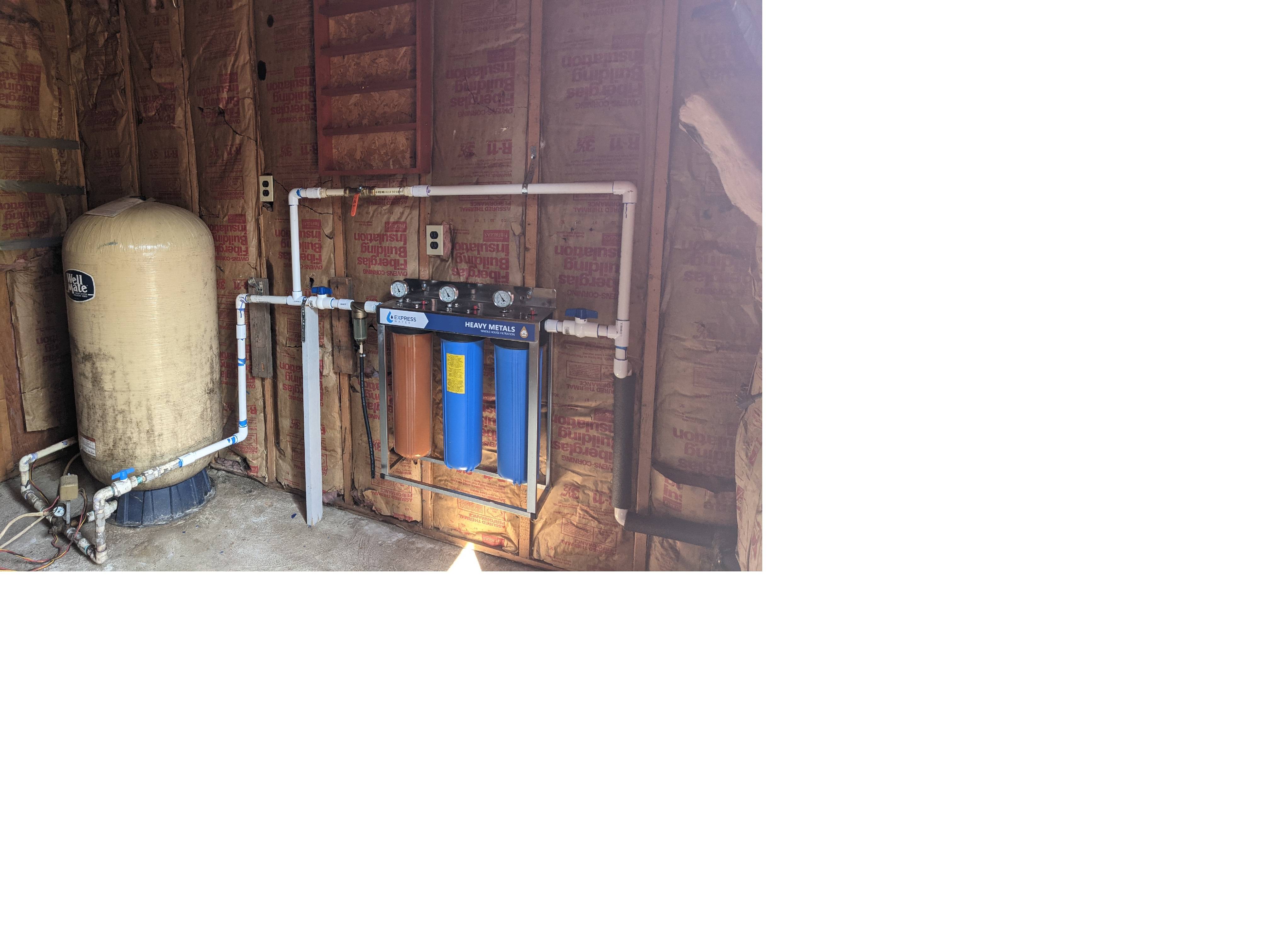Metals can leach and/or corrode, depending on water chemistry. They are also subject to freeze damage.
PVC is subject to freeze damage and sunlight damage, but inside a shed there should be no sunlight, and if you prevent it from freezing it's very cost-efficient (inexpensive) at the "make lots of joints and turns" part of well plumbing.
Black Poly (Polyethylene, but not "crosslinked" so not PEX, and cold-water only) well pipe is good for long runs, a pain for "lots of joints and turns" and freeze resistant.
PEX offers little to no advantage .vs. black poly well pipe in cold water main-line service.
My own well is black poly down the well to a stainless steel pump on lead-free bronze fittings, a bronze pitless adapter through the side of the well, black poly to the house, PVC for the whole bunch of fittings where the water comes in, with filter, shutoff, and over-pressure (bronze in a PVC fitting) a section of PEX to the PVC pressure-tank Tee and PVC split to hot and cold supply side valves, PEX from there out). The connection between the two sections of PVC used to be 1" black poly, but I found I needed a flow restrictor anyway, so I dropped it to 3/4" PEX.
The only other "design consideration" that comes to mind is that I prefer to sheathe insulated walls, as I've seen that "we'll just stop with stapling the insulation in" level of finish be far too attractive to rodents - it also makes the shed less generally useful than one with actual interior walls, e.g for storing tools or garden stuff or bikes or whatever as well as the pressure tank & piping. You could also put a layer of foam sheet insulation over the studs to improve the level of insulation, and/or box-in the water stuff in a more-insulated (openable) box inside the shed. That will minimize both the amount of time heat tape is needed, and how much power it uses when it is needed.

